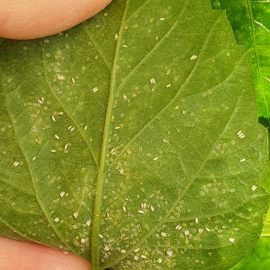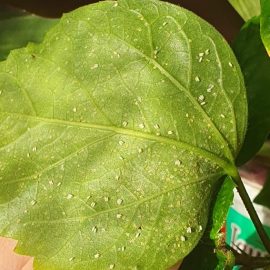Whitefly (Trialeurodes vaporariorum) – pest management
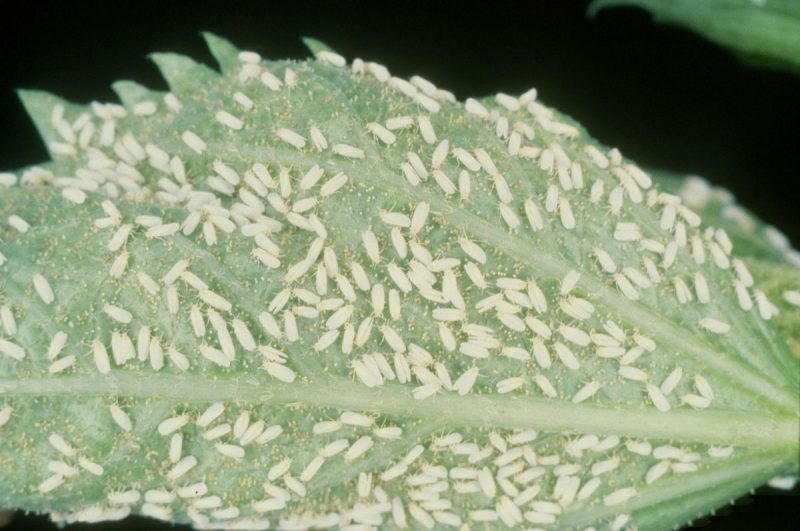
The whitefly, Trialeurodes vaporariorum, is a polyphagous species, found on all continents, in most crops.
Description. The adult has an elongated, white-yellow body, covered by a white, powdery waxy secretion. The wings are well developed. Body dimensions reach 1.1-1.3 mm. The egg is fusiform, with a diameter of 0.22-0.24 mm, with a short pedicle, white-yellow at first, and after two days it becomes black-purple, with metallic reflections. The newborn larva has an oval shape, pale yellow, with red eyes. In the last stage of development, called “puparium”, its body is oval, flattened dorsoventral, and covered by a waxy, white secretion.
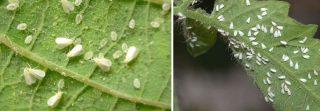
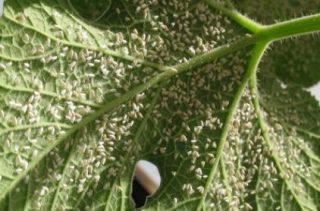
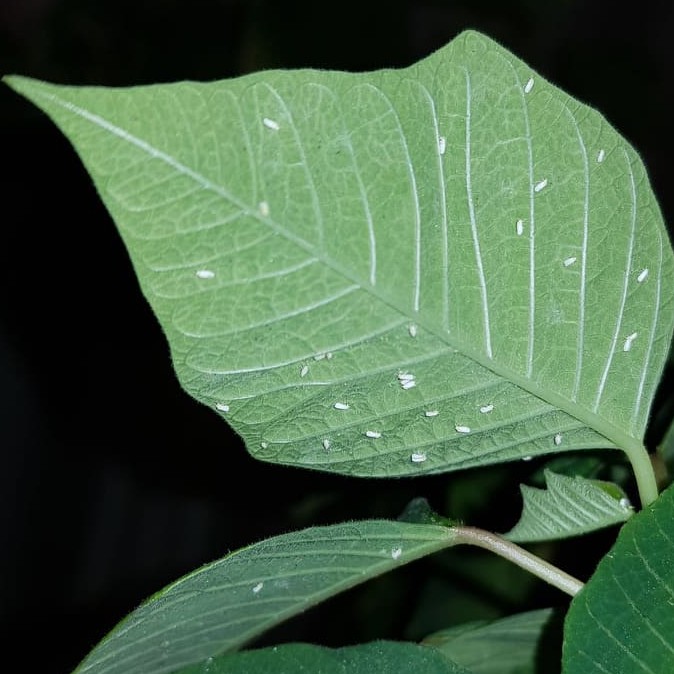
Whitefly – Biology and ecology
The pest develops in greenhouse conditions throughout the entire year, and the field only during the warm periods. In the greenhouse, it can produce 3-6 generations, when conditions are favorable. After 2-3 days from the appearance, the female begins to lay eggs. Eggs are laid on the underside of the leaves, grouped in a circle, or isolated. Each spawning is made up of 10-50 eggs, the total number laid by a female being 100-500. Incubation in greenhouse conditions, at an average temperature of 20-23 º C, lasts 10-30 days, after which the larvae appear. The duration of the development cycle is 4-6 weeks in the greenhouse and 7-8 weeks in the field.
Attacked plants and damages. It has an accentuated polyphagia, attacking a large number of cultivated and spontaneous plants (in the greenhouse and the field). Significant damage is registered to the crops of tomatoes, peppers, eggplants, cucumbers, beans. Adults and larvae colonize the leaves, and oftentimes the shoots as well, by stinging and sucking the intracellular fluid from the tissues. Following the attack, the leaves wither, dry, and fall.
In addition to the direct action of the pest on the plant (caused by feeding), it secretes a sugary excretion that promotes the development of fungi of the genus Capnodium, which negatively influences the physiological processes of the plants, causing the premature drying of foliage, with negative consequences on production.
Control. The destruction of plant debris after the removal of the crop, before planting new seedlings, the disinfection of the scaffolding of the greenhouses, and the soil prevent the attack of this pest. In case of severe infestations, it is recommended to apply specific insecticides.
Recommended products
-
You can find products on a different store
Change Store -
You can find products on a different store
Change Store -
You can find products on a different store
Change Store -
You can find products on a different store
Change Store -
You can find products on a different store
Change Store -
You can find products on a different store
Change Store -
You can find products on a different store
Change Store -
You can find products on a different store
Change Store -
You can find products on a different store
Change Store -
You can find products on a different store
Change Store -
You can find products on a different store
Change Store -
You can find products on a different store
Change Store -
You can find products on a different store
Change Store -
You can find products on a different store
Change Store -
You can find products on a different store
Change Store -
You can find products on a different store
Change Store -
You can find products on a different store
Change Store -
You can find products on a different store
Change Store -
You can find products on a different store
Change Store -
You can find products on a different store
Change Store -
You can find products on a different store
Change Store -
You can find products on a different store
Change Store -
You can find products on a different store
Change Store -
You can find products on a different store
Change Store
Also, for monitoring the pest, the use of traps is recommended.
Recommended products
-
You can find products on a different store
Change Store -
You can find products on a different store
Change Store -
You can find products on a different store
Change Store -
You can find products on a different store
Change Store -
You can find products on a different store
Change Store -
You can find products on a different store
Change Store -
You can find products on a different store
Change Store -
You can find products on a different store
Change Store -
You can find products on a different store
Change Store -
You can find products on a different store
Change Store -
You can find products on a different store
Change Store -
You can find products on a different store
Change Store -
You can find products on a different store
Change Store -
You can find products on a different store
Change Store -
You can find products on a different store
Change Store -
You can find products on a different store
Change Store -
You can find products on a different store
Change Store -
You can find products on a different store
Change Store -
You can find products on a different store
Change Store -
You can find products on a different store
Change Store -
You can find products on a different store
Change Store -
You can find products on a different store
Change Store -
You can find products on a different store
Change Store -
You can find products on a different store
Change Store














































































































































































































































































































































































































































